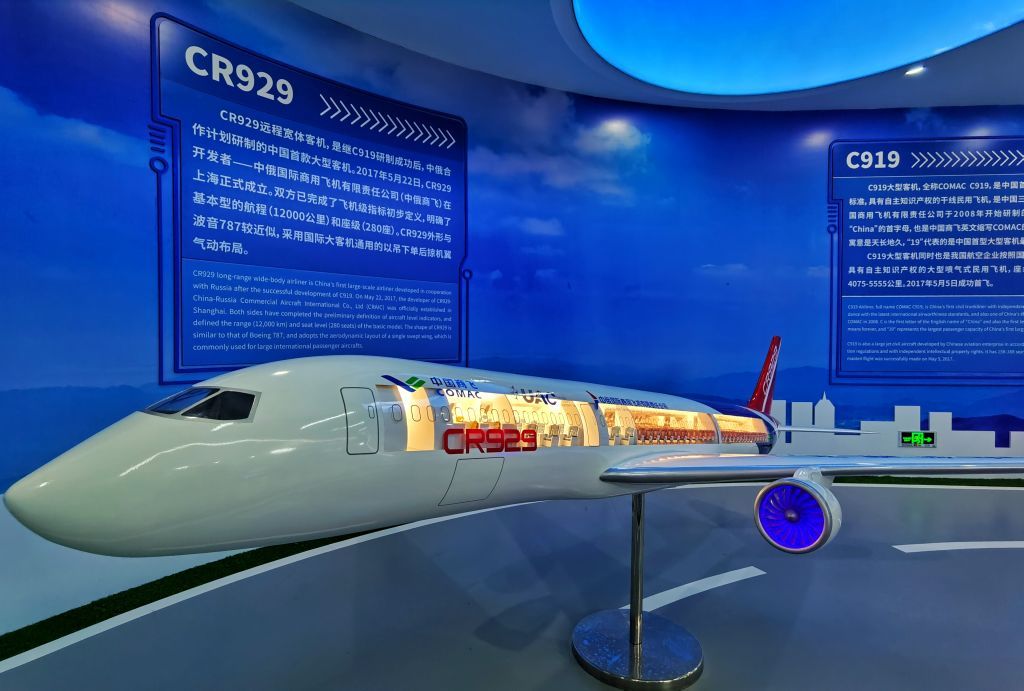Aircraft names and the reason for those names can be very interesting. The reason Boeing commercial jets both start and end with the number seven is an excellent example of this. But what about the upcoming 787 rival known as the CR929? How did this Chinese-Russian collaboration get its name? Let's find out.
The C and R
In the CR929 name, the C and R simply come from the aircraft being a Chinese and Russian collaboration. While the collaboration hasn't been a completely smooth journey, using CR "represent[s] that the widebody commercial aircraft is an advanced commercial aircraft developed by the companies of both countries," COMAC states on its website.
Indeed, the aircraft is a joint project between Chinese planemaker COMAC (which itself stands for Commercial Aircraft Corporation of China) and Russian firm UAC (United Aircraft Corporation). While it's convenient for the Chinese company to select an English-friendly name and acronym, UAC in Russia translates to OAK (Объединённая авиастроительная корпорация), which in Latin letters is Obyedinyonnaya Aviastroitelnaya Korporatsiya (OAK).
The company set up by COMAC and UAC to produce the CR929 has its own name: CRAIC. This stands for China-Russia Commercial Aircraft International Corporation.
Dissecting the '929'
Here is how COMAC explains the numbers that were chosen for the CR929:
"The digit '9' in '929' is the largest numeral, which means "forever" and represents that the cooperation between both sides will be far-reaching and last forever..." The planemaker adds that the number nine "represents that the aircraft will have longer service life and operation period, and the joint venture will grow stronger."
For the second number, the symbolism is a little less grand, with COMAC explaining that "the digit '2' means that the aircraft is jointly developed by the two companies of both countries."
Stay informed: Sign up for our daily and weekly aviation news digests.
What about the final '9'?
Perhaps one of the most interesting things about the name is the total absence of an explanation for the last '9' in the aircraft's model name. This would lead us to believe that the companies were following the pattern established by Boeing, using the first number again as the last number.
In case you weren't already familiar with the story behind Boeing's naming pattern, the reason Boeing jets have model numbers that start and end with '7' is simply due to marketing. Indeed, if you've ever been lucky enough to have taken the Boeing Factory Tour, you'll have been informed that the last '7' is because the company's marketing department realized that it sounded better and looked better in terms of symmetry (Boeing's first jet would have been the Model 700- but 707 was suggested as a nicer-sounding alternative.)
If the CR929 is set to be a rival to the Boeing 787, it might as well have a similar naming pattern right?
Recent events
This year brought fresh concerns for the CR929 program. Despite being planned to rely on homegrown resources, the CR929 was expected to also utilize western components, much like the ARJ21 and C919. So, sanctions on Russia following the nation's invasion of Ukraine caused anxiety for the project.
Thereafter, Russia began considering withdrawing from the program. Russian Vice-Premier Yuri Borisov stated the plans were not going in the direction that suits his country.
Despite the woes, it looks like Russia has had a change of heart for now as the CR929 moved into its initial design phase this month. Chief designer of the C919 series Wu Guanghu highlighted that the general concept has been determined, and the suppliers of the fuselage and tail structure components have been selected.
The next chapter is a significant period for the program. With ties cut between western manufacturers and Russia, there will be a greater reliance on Chinese-Russian resources.
What do you think of the name 'CR929'? Do you think starting and ending with the same number looks or sounds better? Let us know what you think by leaving a comment.

